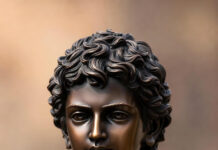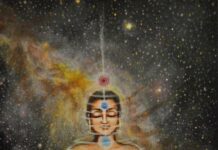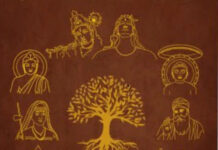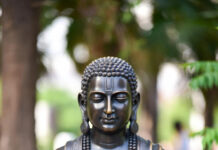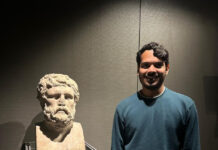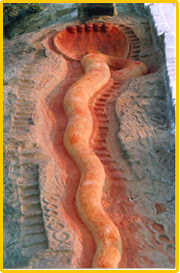
The prevalent notion regarding the Hindu worship system suggests that the Aryans revered natural elements such as fire, lightning, rain, and storms out of fear, deifying them in the process. They beseeched these enigmatic forces for protection, including that of their livestock. As for other Hindu practices, such as the veneration of snakes, trees, and hills, these belonged to distinct groups like the Dravidians or non-Aryans, driven by a similar apprehension of natural occurrences.
These concepts were formulated by early European historians and archaeologists who delved into Indian civilisation. Lacking a philosophical or spiritual background, they struggled to grasp the nuances of symbols and metaphors within culture and spirituality. Their pragmatic, empirical mindset prevailed during an era where empirical reasoning reigned supreme. Concepts from sociology, psychology, semiotics, and linguistics, as well as modern theories on art and culture, were alien to them. Their simplistic interpretations must be viewed in this historical context.
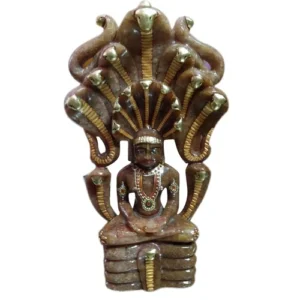
But what we fail to grasp is that even today, these outdated lessons persist in our educational curriculum, upheld by individuals who perceive themselves as intellectuals. The issue with this simplistic narrative is its tendency to belittle us and propagate a distorted view of our cultural heritage. As contemporary worship practices endure, such narratives breed a profound apathy towards our religious customs and traditions among the youth.
I understand that back then, semiotics and sociology were absent, but common sense prevailed. Yet, the Eurocentric arrogance of scholars often hindered them from acknowledging it in their studies. The snake is revered and deified, yes? However, for those residing along the banks of the Indus, the Ganges, and the Yamuna, crocodiles pose a greater threat. Why weren’t they deified? Tigers were deified, but what about bears? Bears are more prevalent than tigers in the forests of the Indus and the Ganges.
A deity essentially serves as a metaphor, a poetic symbol. Initially embedded in poetry, it gradually seeped into our subconscious. Over time, an entity dwelling in the human psyche transforms into a deity, akin to a speck of dust evolving into a pearl within a cluster. An enigmatic essence is what captivates a poet, enabling an entity to transcend into a metaphor. It signifies something deeper; it must possess an intrinsic significance. Beauty embodies such depth; it transcends the mundane, devoid of practical utility. Beauty is inherently mystical, alluding to realms beyond our grasp, perpetually expanding in meaning.
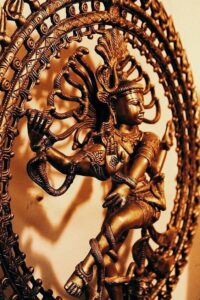
Snakes and tigers became divine beings due to their beauty and inherent mystery. Both possess unique qualities that set them apart. Tigers are described with flames on their bodies, as shown in Tibetan paintings of Padmasambhava riding a tiger represented by waves of flames. It is linked with Indra, the god of lightning, and is the companion of Bodhisattva Vajrapani and Sasta in southern India.
Consider why snakes are connected with water in Indian mythology. Water snakes in India are known to be non-venomous; yet our mythical snakes like Kaliya reside deep underwater. Snakes exhibit a wave-like motion in their bodies. A snake embodies the essence of a wave. It is a mysterious creature that moves swiftly without legs, hears all sounds without ears, poses a threat without claws or teeth. It moves quietly and invisibly, lurking under our feet waiting us to stumble upon it. with unceasing eyes and the ability to embrace others entirely or itself. Often still in meditation for prolonged periods, this creature appears nature’s metaphorical creation.
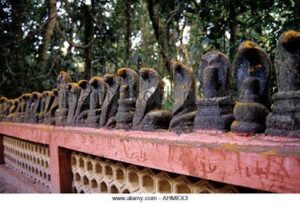
As a metaphor, a snake is ubiquitous, serving as the tongue and tail of animals, the trunk of an elephant, and the hands of a human. It is present in creeper plants, the curls of tender shoots, the eyes of fish, and the necks of birds. It is a commonality among the bodies of living beings.
I personally believe that the designs of living beings bodies hold deeper meanings. While science attributes bodily structures to evolution for survival and reproduction, as a writer, I see aesthetics as profound beyond scientific explanations. Aesthetics is an expression of truth, encapsulated in the phrase ‘Satyam-Sivam-Sundaram’ (truth, divine order, beauty).
Each design carries its cosmic significance aesthetically, revealing an esoteric truth within the body’s form. The divine mother of Arabindo Ashram authored a beautiful book on the esoteric meanings of flowers. Some bodies evoke mystical and dream-like qualities, such as the elephant, cat, crow, earthworm, monkey, and notably, the serpent.
Serpents hold significant symbolism in Indian mythology and religion. They symbolise Vishnu’s bed, Siva’s garland, Ganesha’s belt, and Muruga’s companion, among other associations. Serpents stand as protectors and figures of reverence in various Indian traditions, reflected in intricate statues throughout the country. The names for serpents in Indian languages often serve as beautiful metaphors. The Sanskrit word ‘Sarpa’ birthed the term ‘serpent,’ signifying a hidden flow. In Tamil, ‘Katsevi’ (eye-ear) and ‘aravam’ (murmuring sound) represent ‘snake.
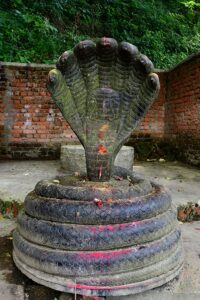
I am from the Nair community in Kerala. According to E.M. Sankaran Nambodiripad, the term Nair may stem from the word Naga (serpent). We are known for our reverence towards serpents, keeping a special area we call Naga Kavu as a small artificial forest near our homes. I reside in a city named after a prominent snake temple located in its center, known as Nagaraja Temple (King Serpent Temple), and the city itself is called Nagercoil. I grew up surrounded by snakes.
In my dreams, I often encounter snakes in a positive light, never experiencing a nightmare. I visualise golden serpents with expressive human-like eyes, at times transforming into human hands or plant leaves. These serpents gesture towards me, displaying exquisite red and blue fruits on a large singular leaf. Once, in a dream, I witnessed a serpent shedding its eyes, resembling radiant colourless diamonds, revealing a ground adorned with countless diamonds.
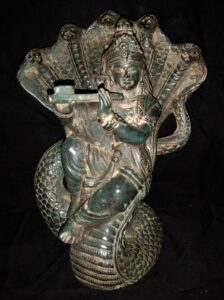
I have penned down many narratives about serpents – over fifteen short stories and numerous articles. However, I continue to recreate snakes repeatedly in my dreams. When I observed the petroglyphs in Ratnagiri, Maharashtra two years ago, I encountered a large snake depiction. This ancient artwork, dating back approximately thirty thousand years to the later Stone Age, felt remarkably close to my ancestry. In this timeless dream we share, our gods reside alongside us.
jeyamohan



